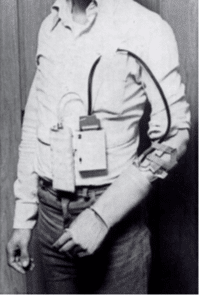
How Do Prosthetics Work?
In the roughly 100 years since prostheses were first widely produced to meet the needs of injured World War I veterans, artificial limbs have grown ever-more sophisticated. From simple advances such as aluminum used to reduce weight and hinged ankle joints for lower-limb prostheses; to body-powered cable systems for upper-limb devices; and, in the 1960s, the first myoelectric prostheses, advances have continually pushed closer to the promise of nearly natural articulation.
This is particularly true for upper-limb prostheses, where visions of flawlessly functioning “bionic arms” are no longer the far-flung fantasies of science fiction writers. Now that so much function is available, it’s only natural to ask, how do prosthetic arms work?
Upper and Lower Extremities
Prosthetic legs, or lower-extremity prostheses, come at varying levels of limb loss:
- Transfemoral (above the knee)
- Transtibial (above the ankle)
- Syme amputation (at the ankle joint, with the heel pad preserved)
- Foot
- Partial foot
- Toe
- Disarticulation (at a joint, e.g., the hip)
Upper-extremity prostheses are used for limb loss above the elbow (transhumeral), above the wrist (transradial), below the wrist (transcarpal), and disarticulation (e.g., the elbow).
Different prostheses have different purposes, based on the patient’s abilities, needs, and goals.
For example, cosmeses are designed to look real — down to hair and freckles — but aren’t intended for high functionality.
Functional prostheses fall into three categories:
- Body powered: Cable systems are engaged by large muscles (e.g., shoulder muscles) to activate movements such as grasping.
- Motor powered: A prosthetic hand might have a switch on the wrist to activate a gripping motion.
- Myoelectric powered: Electrodes on the skin pick up electrical signals from muscle contractions, interpret those signals, and initiate movements in the prosthetic limb.
Whether a person with a limb difference is seeking an activity-specific prosthesis (such as a hook for weightlifting) or a multifunction hand that can lift a suitcase or cradle an egg, adapting to his or her prosthesis can require patience and the skills of physicians, a prosthetist or orthotist, and an occupational therapist.

More About Myoelectric Prosthetics
Myoelectric control of a prosthesis is just what it sounds like: an electronic prosthesis. Yet how do electronic prosthetics work?
Simply, such artificial limbs are powered externally (with batteries) and controlled with electronic signals generated by the user’s muscles. Thanks to smart technology, the precision with which those signals are being interpreted is growing rapidly.
The complex movement of arms — requiring a couple dozen muscles before you even consider the hand — is difficult to mimic with machinery. Yet, myoelectric-controlled components have gained some remarkable abilities.
Advances in hand movements include:
- Individually powered fingers
- Preset handshake grip force
- Fingers that spread and come together (think of holding a credit card)
- Sensors that detect slipping and automatically tighten the grip
- Multiple grip options, from pinching to open palm to grasping large-diameter cylinders.
Current technology allows wrists to lock, mimic natural movement, or rotate 360 degrees.
Elbows, typically including a forearm, can now mimic natural arm swing during walking, exactly position a prosthetic hand thanks to variable bending, and lock and unlock for reliable loading.
Limbs That Learn
A person with limb difference frequently hears the message that he or she must learn and adapt when managing a new prosthetic limb. Coapt’s Complete Control Gen2 is a controller kit that turns that advice 180 degrees, allowing myoelectric prostheses to learn from and adapt to users and to work in concert not only with the user but with other prostheses.
Coapt’s pattern recognition technology can be built into virtually any upper-limb myoelectric prosthesis and captures the muscle signals triggering complex hand and arm movements in a way that allows movements to evolve intuitively.
Complete Control is truly freeing technology, utilizing wireless connectivity to Coapt’s software and app to unlock the power of machine learning — letting users learn and fine-tune critical movements as rapidly as they wish, seeing greater possibilities with fewer visits to a clinician.